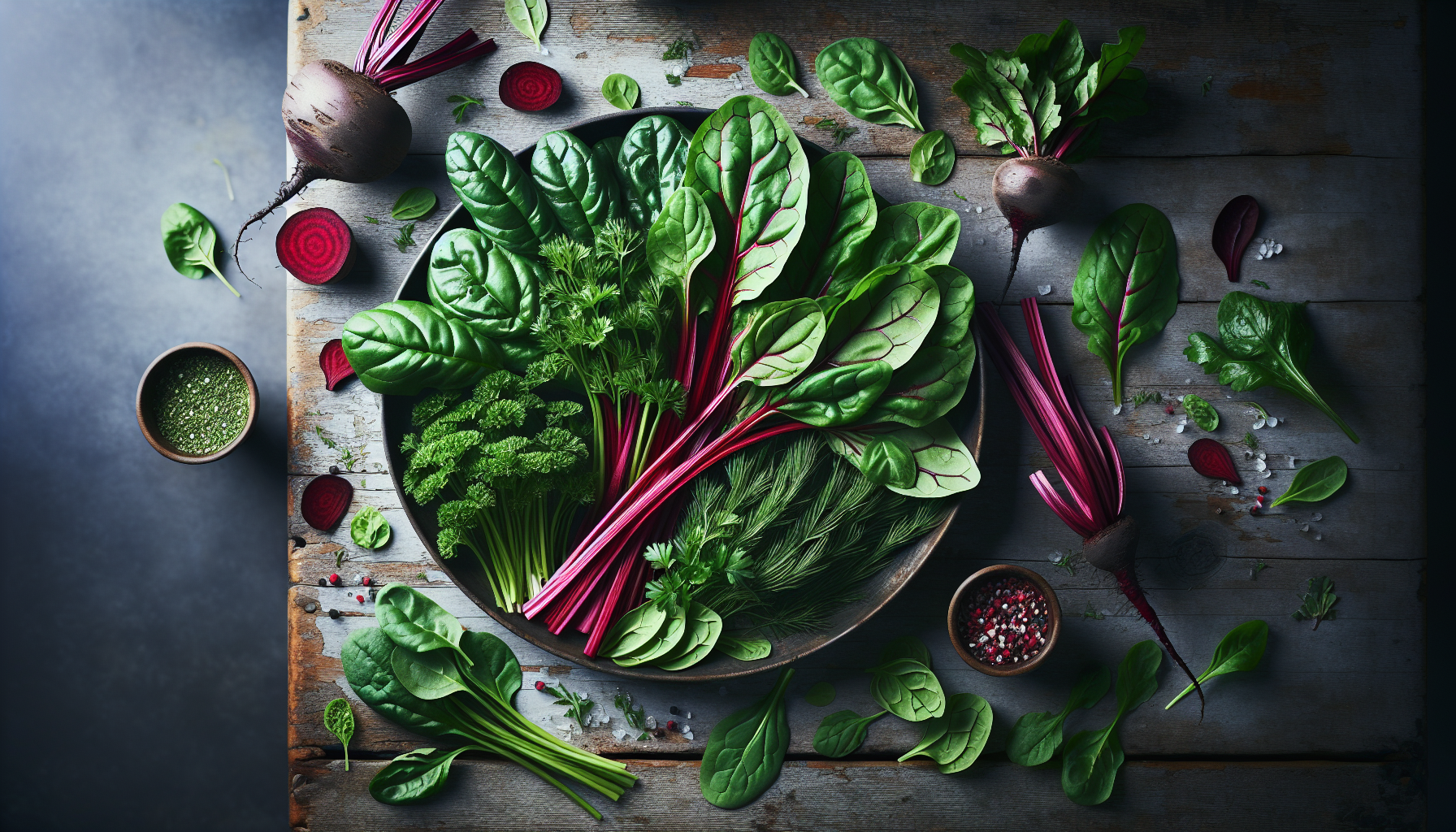Have you ever thought about what goes into your food beyond just flavor? You might have come across the term “oxalates” and wondered how it relates to the herbs and spices that often make their way into your pantry. It’s a topic that seems to pop up everywhere, but what does it really mean for your health and cooking?
What Are Oxalates?
At its core, oxalates are naturally occurring compounds found in many plants. Your body produces some oxalates, but you also get a significant amount from the food you eat. When it comes to herbs and spices, they can contain varied levels of oxalates, which might affect those who are sensitive or trying to manage specific health issues.
The Role of Oxalates in Plants
Plants produce oxalates as a way to fend off herbivores and pests. By doing this, they create an environment where they can thrive without being devoured. For you, this means that each herb and spice you sprinkle onto your meals brings with it a unique profile of oxalates, influencing both flavor and nutrition.
Types of Oxalates
Not all oxalates are created equal. You have soluble oxalates, which dissolve in water, and insoluble oxalates, which do not. Soluble oxalates can contribute to the formation of kidney stones in susceptible individuals, while insoluble oxalates generally pass through the gut without being absorbed.
Why Should You Care About Oxalates?
You might be wondering why these compounds matter in the context of your everyday cooking. If you’re someone who enjoys a rich diet of herbs and spices, understanding oxalates can help you make informed choices, especially if you have concerns like kidney stones or other calcium-related issues.
Health Implications of High Oxalate Intake
For some, consuming high levels of oxalates can lead to health complications like kidney stones. If you have a history of this issue or certain medical conditions (like hyperoxaluria), it’s crucial to be aware of your oxalate intake. On the flip side, for most people, enjoying herbs and spices isn’t a cause for major concern. It’s about balance.
A Closer Look at Common Herbs and Spices
Let’s break down some common herbs and spices you might use in your cooking and see just how much oxalate they contain. This can help you gauge how they fit into your overall dietary habits.
| Herb/Spice | Oxalate Content (mg per 100g) |
|---|---|
| Basil | 5 |
| Parsley | 59 |
| Spinach | 970 |
| Thyme | 14 |
| Coriander | 25 |
| Cinnamon | 5 |
| Turmeric | 11 |
The Impact of Cooking on Oxalates
Cooking methods can affect oxalate levels in foods. Boiling, for instance, can reduce soluble oxalate content. If you enjoy spinach or chard, cooking these leafy greens can help diminish their high oxalate levels. However, it doesn’t eliminate them entirely; being mindful goes a long way.

Balancing Your Diet: Moderation is Key
You may not need to eliminate all high-oxalate foods from your diet. Instead, focusing on moderation and variety can offer a more sustainable approach. Combine high-oxalate herbs and spices with those that have lower levels to create a well-rounded meal.
Knowing Your Personal Health Needs
Understanding your individual health needs is paramount. If you have specific concerns, consulting with a healthcare professional or a nutritionist can shed light on the best way to balance your oxalate intake. They can provide insights tailored to your unique dietary and health requirements.
How to Reduce Oxalate Levels in Your Meals
So, how can you enjoy your favorite flavors while being mindful of oxalates? You can adopt several strategies to reduce oxalate levels in your meals without sacrificing taste.
Opt for Low-Oxalate Alternatives
If you’re looking to decrease your oxalate intake, consider incorporating herbs and spices that have lower levels. Some options include:
- Oregano: Known for its robust flavor, it has a low oxalate content.
- Garlic: An essential ingredient in many cuisines, it’s not only delicious but also a low-oxalate option.
- Rosemary: Adds a fragrant touch with minimal oxalate risk.
Use Cooking Techniques Wisely
Cooking can be a game-changer for reducing oxalate levels. As mentioned, boiling can help; you might also try steaming or roasting. These methods can maintain flavor while lowering oxalate content. Just remember that some techniques may enhance flavor more than others, so experiment to find what works for you.
Stay Hydrated
Drinking plenty of water can help your body manage oxalate levels more effectively. Hydration can dilute oxalates in your system and assist in their elimination, especially if you’re consuming higher amounts.

Why Variety Matters: The Bigger Picture
When focusing on oxalates, it’s easy to become fixated on specific nutrients. However, a diverse diet is key to good health. You might miss out on vital vitamins and minerals if you eliminate foods solely based on oxalate content.
The Nutritional Benefits of Herbs and Spices
Despite their oxalate content, many herbs and spices offer significant health benefits. For instance, turmeric is renowned for its anti-inflammatory properties, while garlic is known for supporting heart health. These benefits often outweigh the potential downsides of oxalates for most individuals.
Incorporating High-Oxalate Foods Mindfully
If you want to include high-oxalate herbs and spices into your meals, consider pairing them with calcium-rich foods. Calcium can bind with oxalates in the digestive system, reducing absorption and the risk of kidney stones. For example, adding a sprinkle of cheese over your spinach can make for a tasty and healthful combination.
Beyond Cooked Foods: The Importance of Raw Veggies
While cooked vegetables are safer for oxalate management, raw veggies can also be part of a balanced diet. If you enjoy salads, you can still indulge in those vibrant leafy greens. Just be mindful about portions and pairings.
Fresh Herbs vs. Dried Herbs
It’s also worth noting the difference in oxalate content between fresh and dried herbs. Generally, dried herbs are more concentrated. Therefore, if you’re using a lot of dried herbs, keep an eye on the quantities you’re adding. A little can go a long way!

Listening to Your Body
In the end, the best guide to managing your oxalate intake is your own body. Pay attention to how you feel after consuming certain foods. If you notice discomfort, it may be worth reevaluating those items in your diet.
Being Attentive to Symptoms
If you’re worried about oxalate-related issues like kidney stones, it’s essential to be aware of symptoms such as pain in the lower back or side, frequent urination, or blood in urine. If these arise, consulting a healthcare professional should be your next step.
Closing Thoughts on Herbs, Spices, and Oxalates
Understanding oxalates can empower you to make educated choices about your diet without fear. The goal is to enjoy flavorful foods while being aware of what you’re putting into your body. Embrace the delicious world of herbs and spices, and find a balance that suits your lifestyle and health needs.
The Joy of Cooking Mindfully
Cooking should be a pleasure, not a source of stress about numbers. With this knowledge, you can be more intentional about what flavors to bring into your kitchen. Your meals can remain vibrant and enjoyable, and you can rest assured that you’re making informed choices. It’s all about finding what works for you and creating joy in your culinary adventures.
The world of herbs and spices is vast and exciting. As you navigate this flavorful terrain, remember the importance of balance and moderation. You can savor your culinary creations while keeping your health in check, so go ahead, cook with confidence, and enjoy your meals!


